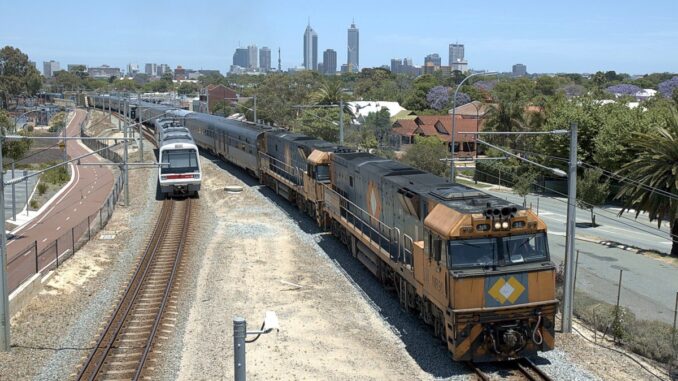
The proposed development of the Gobabis Dry Port in Namibia, intended to facilitate transshipment along the planned Trans Kalahari Corridor rail, is projected to reduce Botswana’s transportation costs via Namibia’s Walvis Bay port by 30%, according to Derick Mokgatle, the acting Managing Director of Sea Rail (Botswana) (Pty) Ltd.
Mokgatle made these remarks during the Intermodal Africa Conference held in Swakopmund, which convened industry leaders, experts, and stakeholders in the intermodal and logistics sectors.
Comparatively, Mokgatle highlighted the advantageous rail connectivity and proximity to ports in the eastern corridors for Botswana, such as those leading to South Africa and Mozambique, in contrast to Walvis Bay. Currently, over 85% of Botswana’s imports and exports flow through the Durban Corridor.
The planned Trans-Kalahari Railway, aiming to link Namibia and Botswana, is slated to have the capacity to transport 14 million tons annually in its inaugural year of operation, escalating to 56 million tons per annum by its 30th year. Construction is scheduled to commence in January 2025, spanning 1,500km from Mmamabula in Botswana to Walvis Bay.
Sea Rail, a wholly-owned subsidiary of Botswana Railways established in 2013, is tasked with developing and operating a dry port facility in Walvis Bay. Mokgatle disclosed that Sea Rail has invested 64 million Namibian dollars into developing the dry port facility, with the total dry port volume as of March 2023 standing at 70,000 tons, boasting a tonnage growth rate of 128%.
In 2023, Botswana imports via Walvis Bay amounted to 116,531 tons, compared to 89,101 tons in 2022, while exports reached 233,038 tons in 2023, compared to 1,672 tons in 2022.
Mokgatle outlined potential future volumes for Walvis Bay, including 1,394,000 tons of coal exports by 2050, 874,000 tons of salt exports, 468,000 tons of chemicals, 81,000 tons of animal feed, and 100,000 tons of copper concentrate.
Highlighting the critical role of dry port infrastructure in bolstering regional logistics and supply chain resilience, Mokgatle emphasized the necessity for increased collaboration among industry stakeholders to drive strategic initiatives for sustainable growth. Sea Rail aims to capitalize on the opportunities presented by the development of dry port infrastructure for a more interconnected and prosperous future.
Botswana and Namibia anticipate that the Trans-Kalahari Railway project will yield substantial socioeconomic benefits, including enhancing the rail capacity of Botswana Railways and TransNamib Holdings Limited.
Additionally, it is expected to alleviate strain on regional road infrastructure and decrease the likelihood of accidents involving heavy trucks, as freight transportation shifts from road to rail. The railway line is poised to stimulate the construction of sidings to nearby mines, businesses, farms, and potentially serve as an alternative transit route for traffic from the Gauteng region in South Africa to overseas markets.
